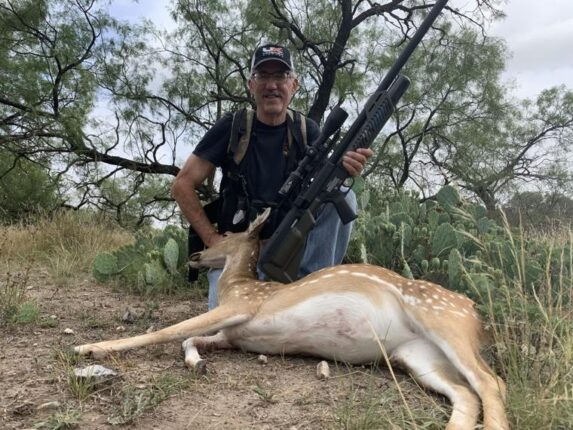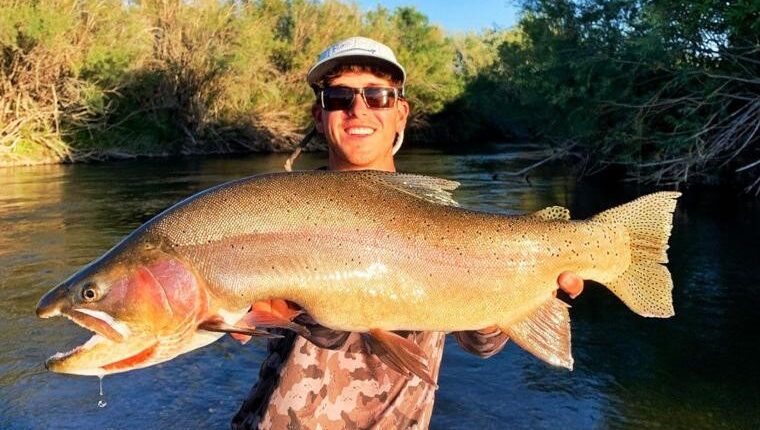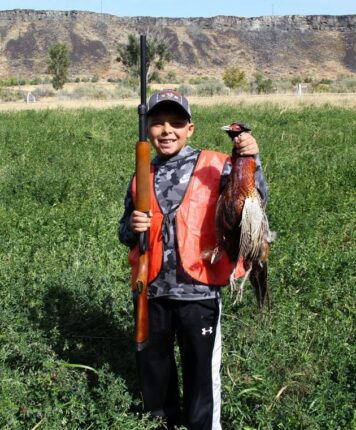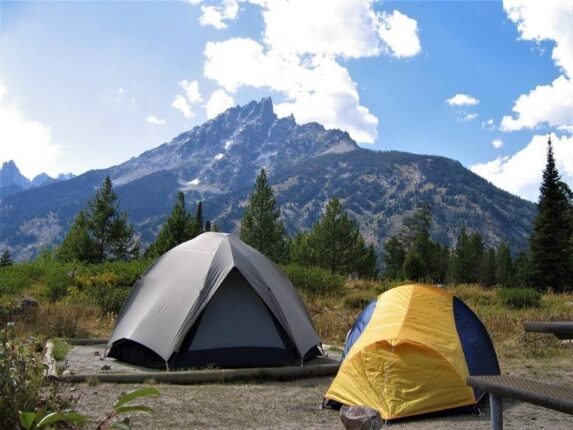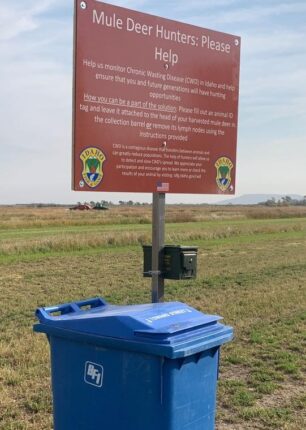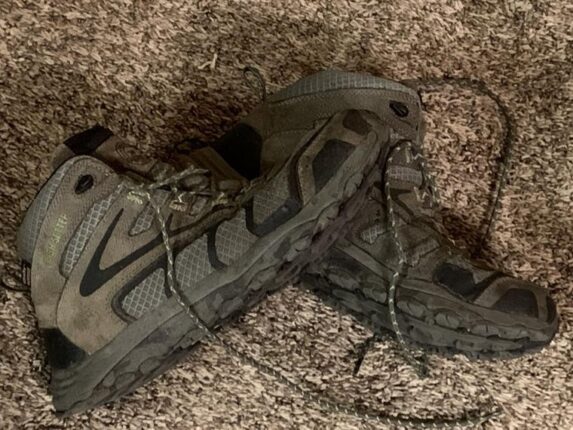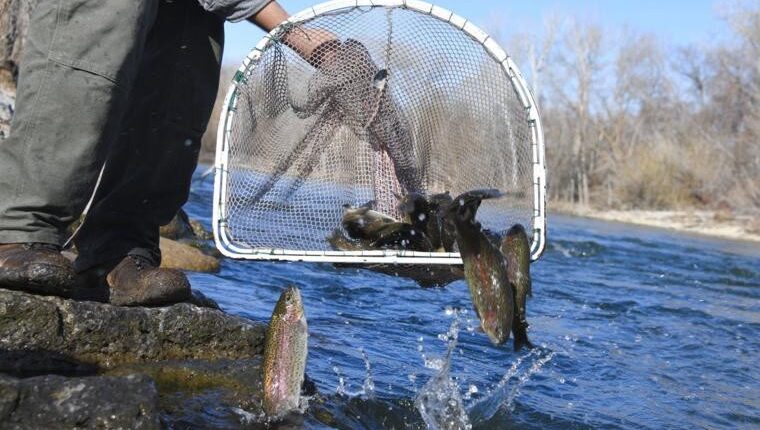I love eating wild game. I get some of the best ribeyes in the country and yet I still favor fried backstrap with milk gravy and french fries. Or what about a smoked forequarter made into chopped BBQ sandwiches?
I’ve even noticed amongst the young yuppie crowd that there’s an interest in hunting/eating wild game due to it being the undisputed king of organic food. With the dropping number of hunters, I’m surprised that Fish & Game isn’t playing this angle.
The last two weeks I’ve written articles on meat and processing your game. It’s only logical to follow up with an article on recipes. But when cooking wild game remember a few things:
1. Big game doesn’t marble (intermuscular fat) like beef so it is not as juicy. Don’t overcook it or cook it as fast as you do beef. Cook your big game on the medium rare side.
2. Deer/elk haven’t been finished out the last 120 days on corn so it might have a slight off-taste that you need to mask.
3. If tough, use Adolph’s Tenderizer.
BACKSTRAPS/FILETS/CHICKEN FRIED STEAK
Backstraps and the filets are the all-time favorites. Here’s how the Claycombs like to eat them.
The filet mignons, I marinate mine for an hour or two and then apply seasoning. Right now, I’m favoring the coarse ground McCormick’s seasoning. Grill on medium heat. Also great for kabobs.
Now for everyone’s all-time favorite. I’m going to lump backstraps and round steaks together because I chicken fry these. My wife beats them with a tenderizer and sprinkles on Adolph’s Tenderizer.
Let sit 15 minutes. Dip in milk, roll in flour and sprinkle with salt and pepper. Fry them in a black skillet until golden brown. I like them cooked medium but my wife cooks them a little crispy and that’s great, too.
I always make milk gravy with my CFS. Another twist is to sauté onions and make onion gravy and garlic toast. Fry up some French fries and drizzle the gravy on the steak, French fries and garlic toast.
A meal fit for kings. I can get the best beef in the country and yet this is my most favorite meat in the world. My family loves fried backstrap.
FLANK STEAKS/ TRI-TIPS
These make great appetizers. Marinate for an hour or two then lay on a pan and heavily sprinkle on McCormick’s coarse ground steak seasoning. Finely chop up some onions and green peppers and lay on the flank. Roll it up and pin it together with toothpicks.
Smoke on low heat for an hour and then turn up the heat. When done, slice paper thin across grain.
These make great hors d’oeuvres. After eating them once you will not believe that for all of these years you haven’t saved them.
KABOBS
Another way to use your steaks is to cut into 1x1x½-inch chunks. Marinate the steak, mushrooms, slices of green peppers, onions and squash for 2-4 hours. Skewer the above ingredients, sprinkle with Tony Chachere’s seasoning and cook on your Camp Chef pellet smoker. These are to die for.
FOREQUARTER
Now for my all-time favorite and after trying it once it will be yours too. The third most tender muscle on the carcass is in the shoulder, if you cook it slowly. Sprinkle the shoulder with your favorite seasoning salt. Smoke it on low heat for 3-4 hours. I used to lay bacon strips over it but haven’t in 30 years. Then put it in a black turkey roasting pan and put in about 2-3 cups of water. Put it in the oven all night at 180 degrees. If you wake up in the middle of the night check on it. If it runs out of water it is ruined. If it is low, add two cups.
When it falls off the bone with a fork, it’s done. If not, turn the heat up to 300 degrees. After cooking all night, it should finish in 30-45 minutes. But to make sure this is clear, if it doesn’t fall off the bone with a fork it is not done.
Pull the meat off of the bone. There will not be enough meat left on the bone for an ant to eat. All of the collagen and gristle has disappeared. Chop into ½-inch chunks. Sprinkle with Tony Chachere’s seasoning salt. Toast buns in a Lodge black skillet on both sides with butter. Throw on a handful of chopped meat and douse with your favorite BBQ sauce and a little Tabasco sauce. I cannot tell you how good these are. Your petite little wife will eat two. It will rival any beef brisket sandwich that you’ve ever eaten.
FAJITAS
Use the skirts to make fajitas. Peel the tough skin off of both sides. Slice ¼-inch slices cross grain.
Marinate the meat, onions and green peppers for 3-4 hours. Cook everything in a black iron skillet. Fill a tortilla and feast.
BBQ RIBS
Trim off what fat cover is easily removed and sprinkle with coarse ground McCormick seasoning.
Place on your smoker for 3-4 hrs. then put in a covered dish in your oven that is preheated to 325 degrees. Cook until the meat falls off of the bones. Douse with BBQ sauce and dig in.
SAUSAGE
Years ago I decided that I like a good hot dog but not the Joe Cheapo $.99/pack hot dogs. So now I make hot dogs out of sausage. Everyone will die for them. Smoke your sausage and then for condiments put out bowls of chopped onions, avocado slices, Wolf Brand chili and spicy mustard. Eat one of these and you’ll fall back in love with the lowly hot dog!
Tom Claycomb lives in Idaho and has outdoors columns in newspapers in Alaska, Idaho, Utah, Nevada, Colorado and Louisiana. He also writes for various outdoors magazines and teaches outdoors seminars at stores like Cabela’s, Sportsman’s Warehouse and Bass Pro Shop.

